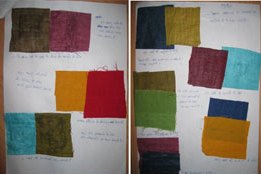
Crafts, Handlooms, Art
Development of Printing in Rajasthan: Reflections
Gaur, Sonal
September, 2018
“……. It would seem that the author of nature, as a set-off against other advantages which Europe enjoys, has granted India ingredients, and above all, certain waters, whose particular qualities have much to do with beautiful combination of painting and dyeing presented by Indian cloths.” -Father Coeurdoux
Wisely spoken words draw many a comparison of the geniuses of Indian craftsperson in the whole world. Their mastery on the colour is truly appreciated by the wearers of colourful textiles who look equally mesmerizing to the novice eyes of the foreign land.
Versatility of the fabrics produced in India can be estimated by the classification done by John Irwin in his article titled, “Indian Textiles in Historical Perspective”. He divides the cloth manufactured in following categories; (a) clothes that are woven & dyed by professional skills of craftsperson’s of India; for local communities, (b) articles of luxury made under court patronage or in the court tradition, (c) embroidered textiles and (d) fabrics of indigenous tribes. Here the dyed articles in first category also include the printed textiles. Printing and dyeing are the two techniques that go hand in hand in India.
Of Indian Art, printing constitutes a large part of textile art manufacture of India. Printing being done on almost every textile base, it has attained the highest level of perfection. Printed cloth is a cloth of commoner and there is no single village in India where one can’t find bright coloured fabrics all around. Of all the states, Rajasthan constitutes the most number of styl...
This is a preview. To access all the essays on the Global InCH Journal a modest subscription cost is being levied to cover costs of hosting, editing, peer reviewing etc. To subscribe, Click Here.
ALSO SEE
Curriculum for Design Education of Craftspersons
Agarawal, Megha
The Cultural Diversity Umbrella
Jongeward, Carolyn



